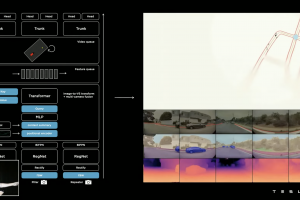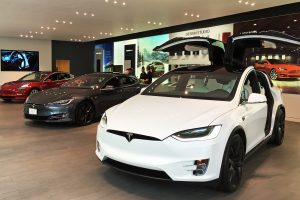There’s so much happening here on Earth Day to protect and nurture the planet! The future is now for CleanTech and renewables.
We have smart meters that are connected to the internet and offer data tracking of electricity and suggestions for better consumption, such as when to charge batteries for optimal efficiency. We’re beginning to hear about microgrids that introduce localized energy production — stationary energy storage through batteries mitigates renewable energy intermittency. Heat pumps that pull in hot air from cold areas and vice versa are becoming much more commonplace due to their extreme energy efficiency — they create more heat energy than what they use.
Topics that speak to the progress being made on this Earth Day 2021 range from renewable energy sources and technologies like solar arrays, wind power, the electrification of buildings, energy efficient infrastructure, zero emissions transportation, renewable energy transmission and storage, and removing carbon dioxide from the atmosphere. We’re feeling much more certain that major advances in energy sources, transport, and heating can help us to reach net-zero by 2050 if cities and innovations are digitally interconnected for real impact.
The Future is Now — But We Need to Remember Where We Started
Let’s start off with a couple of stats about climate change to set the scene. For nearly about 12,000 years, carbon dioxide made up about 280 parts per million of the earth’s atmosphere. Since the Industrial Revolution, that has increased to 415 parts per million. That’s about a 50% increase. Every year, this parts per million increases by about 2.5. It’s estimated that about three-quarters of global warming comes from that increased concentration of CO2 and that humans are responsible for about half of those emissions. Over the last 60 years, the surface temperature of the planet has risen by about one degree Celsius.
If current policies were to continue, by about 2100 the temperatures will rise by about four degrees Celsius. With just the one degree Celsius increase already in place, the frequency of billion-dollar weather events has nearly tripled in the last 20 years. If we continue to pollute at this rate, we could see a 10% decrease in global economic output, an estimated 800 million people that would be displaced, and lethal heat waves that could kill millions.
This is a desperate situation. If we want to believe that the future is now, we must look to CleanTech and renewables, which can be the solution. The Paris Climate Agreement is seeking to limit those global temperature increases to no more than 20 degrees Celsius from pre-industrial temperatures. We’ve already gotten half that distance, a goal that really is likely to be achieved through the transition to renewable energy but also with great energy efficiency and switching fuel types.
In 2019, almost 27% of global electricity production was generated by renewable sources, helped along by CleanTech developments that are designed to mitigate or even stop negative environmental impacts. Of course, a lot of the investment and interest in action that’s happening in CleanTech and renewable energy is going to be propelled by governments and corporations.
Just this week, Bloomberg reported that European Union (EU) lawmakers reached a late-night deal to make the bloc’s ambitious climate goals legally binding, paving the way for new rules and standards to overhaul the entire economy. It occurred a day before a climate summit of world leaders hosted by US President Joe Biden. Representatives of EU governments and the European Parliament agreed in principle on the so-called European Climate Law, which foresees a 55% reduction in net greenhouse gas emissions by 2030, compared with 1990 levels, and zero net emissions by 2050. Later on Wednesday, the European Commission will unveil standards for the classification of green investment.
A massive transition with global implications is underway across many different segments of CleanTech and renewable energy. In the past 2 decades on and offshore wind and solar photovoltaic has produced an inflection point in the renewable share of the global electricity mix. The levelized cost of electricity is the revenue required to build and operate a power source over a specified cost recovery period. Over the past decade, we’ve seen that cost for solar decrease 80% and on and offshore wind together dropping around 55%.
Right now, we have already seen the cost of renewables, particularly solar and onshore wind, are dropping below those levelized costs. That’s in most of the world. By the end of the decade, the cost of renewals are expected to fall another 60 to 70% as innovation and continued investment from both the public and private sectors continue to push that economies of scale. These decreases are mainly due to economies of scale and innovation, past investment, and supportive policies that are both a part of that investment, particularly from the public sector. Together, these have helped renewables become more cost-competitive. In most of the world, these costs fall below coal and gas plants.
The US & Climate Leadership: Can the US Claim the Future is Now for Renewables?
Renewable energy sources reflect energy independence, as electricity is generated from the natural environment. Indirect electrification emerges when enough batteries exist to store power when the sun isn’t shining or when the wind isn’t blowing. As a center of innovation, the US is re-establishing its geopolitical relationships with the rest of the western world, looking to renewables as part of a clean energy future. Then again, the US leads the world in oil production. How can the US say that the future is now for climate policy if it doesn’t turn its proverbial back on oil?
Let’s zoom in on one US state that is living the “future is now” mantra as example of the evolution in CleanTech and renewables, with the hope of more reduction in fossil fuel reliance. The fifth biggest oil producer in the world, coming after countries like Russia, Saudi Arabia, and Iraq, Texas has never been reluctant to celebration its wealth of oil. Yet Texas is actually becoming somewhat of a champion of renewable energy. Several influences have shifted Texas away from being strictly an oil state and into becoming a renewable energy leader. It’s been a combination of plentiful natural renewable energy resources that’s being combined with support of legislation. Add in declining costs, and Texas has turned renewable energy into a very viable energy source.
Strong and consistent winds across the year make wind energy the predominant form of renewable energy in Texas, for example. Research out of the University of Texas Austin has shown that, for new energy capacity, wind is the cheapest form of energy generation in Texas. Renewable energy makes the most sense from a cost competitiveness analysis. Over 17% of Texas’ power comes from wind energy, which surpassed coal in 2020 to become the second largest segment. It’s the largest wind producer in the US, producing about a quarter of all the country’s wind power.
And what about windows? If Texas were its own country, it would be the fifth biggest window producer in the world, nearly comparable to its position with oil production.
We at CleanTechnica all know that Tesla has committed to building its largest factory in the world just outside of Austin, producing battery cybertrucks among many other models in the state. When Elon Musk sees potential, we all take notice. Tesla is leading the way so that the transportation sector is loving a decarbonized transportation option. For Tesla owners, the future is now, and Texas is listening.
Final Thoughts
Renewables today are just 11% of total energy consumption. Electricity production is only 30% of emissions. If the remainder of the economy were to be decarbonized, it would affect many sectors of society — agriculture, transportation, steel production, and so much more. The transformation must begin with modernizing a power infrastructure to handle widespread electrification — a smart grid that is decentralized and multidirectional. That system would allow renewable energy at residential and commercial sites to produce electricity and contribute to the grid. Let’s all advocate as constituents for this change on Earth Day and everyday, shall we?
Let’s send a shoutout to a podcast that offered ideas about CleanTech and renewables.





